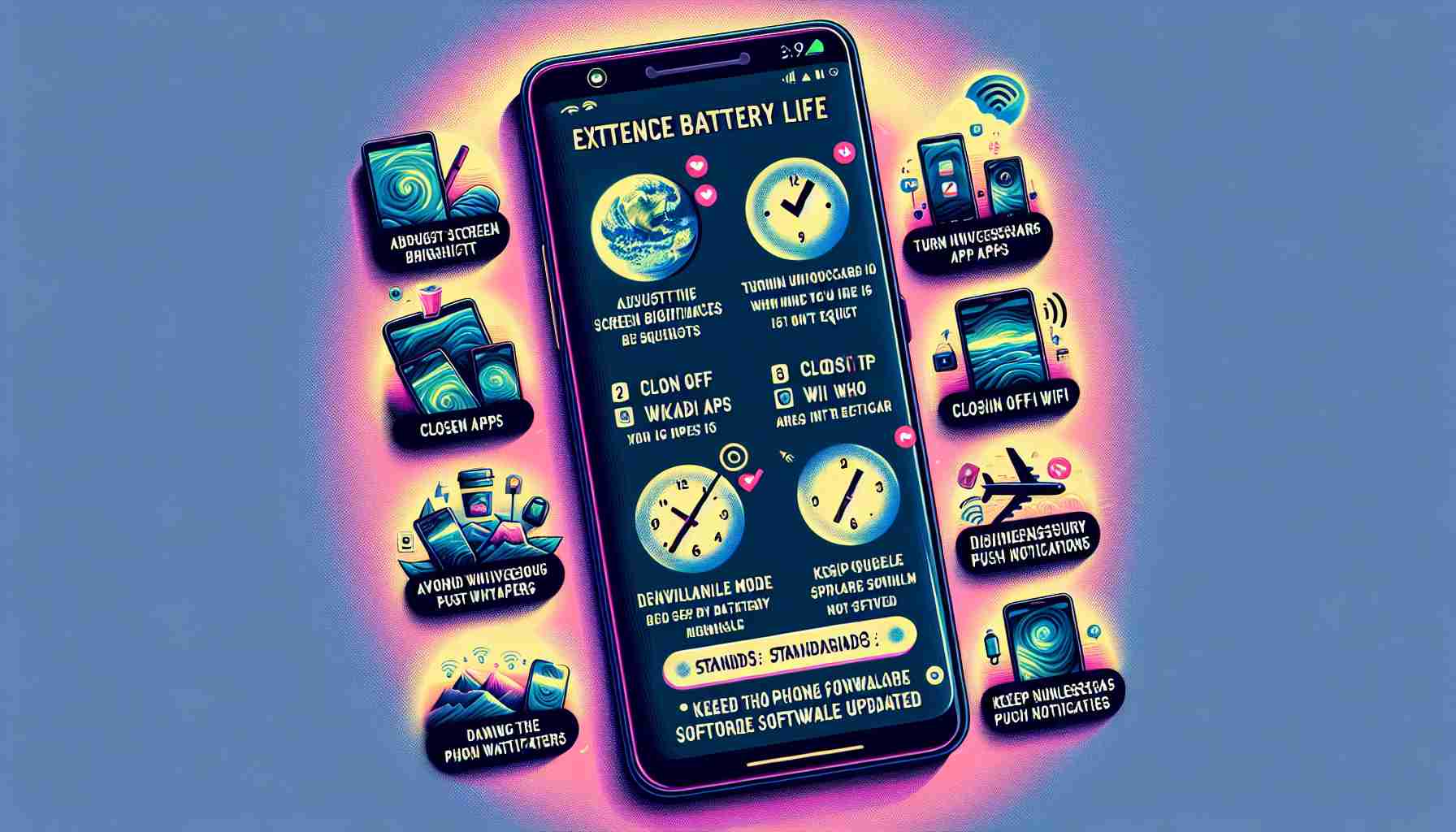Maximizing the battery life of an Android smartphone is crucial for getting through the day without reaching for a charger. Here are seven practical steps to ensure your device stays powered longer.
Limited Background Running Apps
A significant battery drainer is applications running in the background without your knowledge. To counter this, regularly check your ‘Battery’ settings to identify and remove or replace high-draining apps.
Disable communication features
Turn off Bluetooth, WiFi, and GPS when not in use. Although they’re imperative for connectivity, these features can deplete your battery considerably if left on constantly.
Embrace Dark Mode
A dark mode is not just gentle on the eyes during the night; it also conserves battery, especially on OLED screens. Activate it through the ‘Display’ settings on your device to potentially prolong battery life.
Adjust Screen Brightness
Screen brightness takes a toll on battery consumption. Utilize the auto-brightness feature or better yet, set your screen brightness to the lowest comfortable level to save more power.
Activate Adaptive Battery
Introduced in Android 9.0 Pie, the adaptive battery learns your usage patterns and reduces battery usage for rarely used apps. Find and turn on this feature in the ‘Battery’ section of your settings, but keep in mind it might delay notifications for some applications.
Power Saving Mode
Most modern Android phones are equipped with a power-saving mode that is triggered at low battery levels (typically around 20%). You can also customize this setting to activate whenever you need to conserve energy.
Monitor Battery Health
Keep an eye on your phone’s battery condition with apps like AccuBattery, which provide detailed operational data. Regular monitoring allows you to address issues promptly.
By following these steps, you can enhance the efficiency of your Android phone’s battery, reduce the frequency of charges, and enjoy a more seamless mobile experience.
Optimize Your Apps
Consider using lite versions of apps or web versions, which often consume less power. For example, Facebook offers Facebook Lite, which is designed to use fewer resources and minimize data usage.
Update Your System and Apps
Ensure your Android operating system and all apps are up-to-date. Developers frequently optimize their software with new updates to make them more battery-efficient.
Temperature Management
Keep your phone out of extreme temperatures. Both heat and cold can negatively affect the battery’s health. Avoid leaving your phone in direct sunlight or in a cold environment for extended periods.
Charge Efficiently
Follow manufacturer recommendations for charging habits. It’s usually advised to avoid letting your battery completely die or charging it to 100% all the time. Some suggest keeping it between 20-80% to optimize lifespan.
Turn Off Vibration
Disable haptic feedback and vibration for notifications and typing. These features can cumulatively use more power than you might expect.
Use Battery Saving Apps
Some apps are designed to help manage power consumption further. These apps can automatically adjust settings on your device to reduce battery use.
Managing Notifications
Minimize notifications by turning off unimportant app alert. Each notification wakes up your device and briefly turns on the screen, which over time, adds up in power usage.
Key Questions and Answers:
Q: How can I prevent apps from draining my battery in the background?
A: You can restrict background data usage for individual apps through the settings, use Battery Optimization, or even force stop apps that you do not use often.
Q: Is it harmful to charge my Android phone overnight?
A: Modern smartphones are designed to handle overnight charging without damaging the battery. However, it’s generally better for battery longevity to avoid charging to 100% or letting it drop to 0% regularly.
Q: Can live wallpapers affect battery life?
A: Yes, live wallpapers can consume more power than static ones because they often have animations or effects that require more processing power.
Key Challenges and Controversies:
One challenge is balancing performance with battery life since some energy-saving measures can impact the device’s usability or functionality. Users often have to decide which background apps are essential and which can be restricted.
There is also controversy surrounding the topic of fast charging and its impact on battery life, with some experts arguing that fast charging might reduce the overall lifespan of the battery due to the increased heat generation.
Advantages and Disadvantages:
Advantages:
– Extending battery life reduces the need for frequent charging, which can be convenient for users who are constantly on the move.
– Better battery management can lead to longer overall battery lifespan, meaning you may not need to replace your phone or battery as quickly.
Disadvantages:
– Some battery-saving methods might limit functionality, such as disabling GPS or not receiving notifications in real time.
– Aggressive battery saver settings can hinder the user experience by slowing down the phone’s performance.
Related Links:
For additional information on maintaining your Android device and optimizing its performance, you might want to visit the official Android website: Android.
